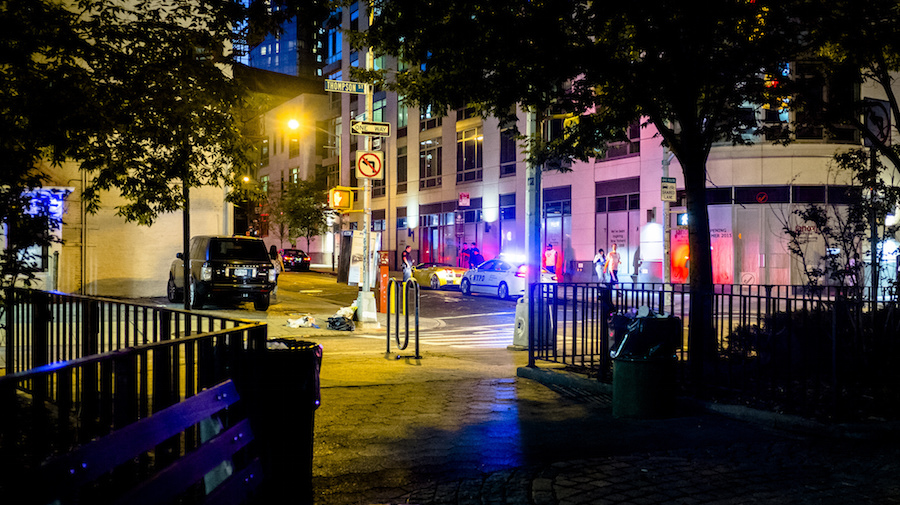During the Nice attack, French police asked people not to share photos and videos. Why? Facebook Live usage has gone beyond melting popsicles and exploding cans of biscuits. It’s now being used by the public during police shootings like Dallas, and in terrorist attacks.
Out of respect for victims and families, please don’t share video/photos of victims or the Crime scene. https://t.co/hF48Ia3Cdb
— Michael Walter (@MichaelMWalter) July 15, 2016
Just saw the most disturbing images and video clips from #NiceAttack -pls don’t share them. It’s disrespectful to innocent victims.
— Raza Ahmad Rumi (@Razarumi) July 15, 2016
As the digital front line, journalists often tell each other, “please don’t watch that video”. Just last week, a colleague and I discussed part of a video we had seen of a beheading, so we discouraged everyone else on the team from doing the same.
Our Slack is full of messages like: “I watched the XYZ video. Please don’t watch it.”
Don’t watch the video. 5 years of war does horrible things to someone’s brain. Justice is needed, quickly.
— Danny Gold (@DGisSERIOUS) July 19, 2016
.4/ Having seen my share of beheadings, i thought i was immune. But 2watch a young child subjected 2such an unspeakable act was harrowing
— Hala Jaber (@HalaJaber) July 20, 2016
News organizations have made decisions in the past not to share video because it features disturbing or graphic content but, as live video becomes the norm and every attack or shooting is revealed minute-by-minute through social media, there’s a new consideration: the safety of officers and victims.
Stories move faster than we can tell them and filter them. Perhaps it’s not just our job to bear witness, but also to guide people through events. The public loves debunk stories, which show how to intelligently analyze the content on social media. But we rarely let people know the consequences of sharing footage from the scene that we filter out, shrugging off the burden as “if they really want to see it, they’ll find it and share it.” One lawmaker in the US tried to put real consequences on sharing troubling images through a law. It didn’t make it very far.
It’s easy for people to understand the consequences of sharing ISIS videos, since journalists have made it clear that sharing ISIS videos only furthers their propaganda. We also talk about vicarious trauma, which isn’t reserved for journalists. With fewer filters for content, the ethics of publishing videos is up for debate.
Remind audiences of the real-world consequences
Sharing active police locations and movement jeopardizes investigations
During ongoing attacks, the police may end up working against news organisations, especially if the attacker is monitoring social media. It happened in Orlando. It’s bound to happen again.
Sharing the location of someone who may be hiding can put them in danger
Asking for permission to use that photo? Or just want to check in on them during an incident? Asking them where they are may lead a perpetrator right to them, either by seeing your message, or hearing a phone buzz or ring.
Sharing a graphic video might mean that someone sees their loved one die before authorities can tell them
I’ve been the person who rings the doorbell of the car accident victim. It’s not fun. Police don’t release names of victims until the families are notified. But what if a video showing a loved one goes viral? It’s worth taking a moment to think about how people might find out someone they love is hurt or worse.
Not sharing? Tell everyone why
We pass over a lot of footage at Reportedly: often when it’s too brutal, it’s unnecessary to the story, it furthers terrorist agendas.
When you make those decision as a newsroom or as an individual, explain why. There’s no use in pretending you don’t know it’s out there when everyone else does.
We often acknowledge and explain in language like this: “We’ve seen graphic video of this event. We’re choosing not to share because not only is it too graphic, but it shows police locations.”
What are our obligations?
Is it our job to make sure the public isn’t so de-sensitized to certain kinds of footage that they don’t pay attention anymore? We can’t make the decision for everyone, but we can help people make decisions by explaining our own.
Is it our job to watch all the footage and share what is really newsworthy? We can’t hurt ourselves constantly just to bear the burden alone. It’s OK to say you chose not to even watch because others have detailed what was exposed in that video or photo.
There is more footage than ever, more stories, more images. Journalists aren’t the sole filter anymore, but what we can do is guide our audiences to make better decisions about viewing it – and spreading it further.
P. Kim Bui is managing editor at Reportedly, a member of the First Draft Coalition.
Follow First Draft on Twitter and Facebook for regular updates on social newsgathering, verification, journalistic ethics and hoaxes.



